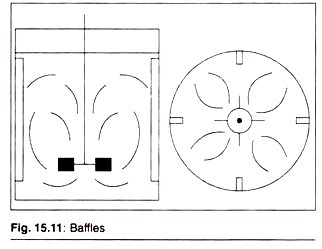ADVERTISEMENTS:
In this article we will discuss about the life cycle of trypanosoma gambiense.
Trypanosoma gambiense is digenetic; i.e., it completes its life cycle in two hosts. The primary or definitive host is man. The mammals, like pigs, buffaloes, antelopes often act as reservoir hosts harbouring the parasite. The intermediate host is blood sucking insect called tsetse fly (Glossina palpalis).
Life cycle in man:
ADVERTISEMENTS:
The metacyclic stage (infective form) of T. gambiense is introduced into the body of man by the bite of the tsetse fly, Glossina palpalis. The tsetse fly harbours the metacyclic form in the lumen of its salivary glands.
When the vector sucks human’s blood, it introduces the contained trypanosomes into his blood stream. During sucking through the proboscis, the fly releases metacyclic forms along with saliva. The saliva of tsetse fly contains an anticoagulant which prevents the clotting of blood.
Multiplication:
All stages of Trypanosoma in man are extracellular as the parasites are found in blood plasma and not inside blood corpuscles. Within the host’s blood the metacyclic forms (which are devoid of flagellum) become transformed into long, slender and flagellated forms.
ADVERTISEMENTS:
They swim within the human blood by the beating of their free flagella and the vibratile movements of the undulating membrane. The adult forms of the parasite multiply by longitudinal binary fission.
The multiplication commences at the kinetoplast and is followed by the division of nucleus and cytoplasm. Sometimes multiple fission has also been observed but no syngamy occurs in the life cycle. It is to be noted that multiplying trypanosomes gets energy by anaerobic glycolysis (Fig. 4.5 and 4.7).
Mishra and Choudhury (1974) observed for the first time the presence of amastigotes and sphaeromastigote stages from arteriovenous shunts of laboratory animals after 5th day of infection. These are active stages and show binary fission. Amastigotes are round to oval in shape with a large vesicular nucleus and kinetoplast; flagellum absent.
Sphaeromastigotes are round with a central nucleus. Flagellum originates from kinetoplast wraps round the cell body and leaves as a free flagellum. These forms are found in choroid plexus, cerebrum, heart, lung and some other arteriovenous stumps of rats, cats and monkeys.
Metamorphosis:
When the glycolysis process is hampered and trypanosomes stop multiplying. The long slender parasites now shrink to short stumpy forms which are devoid of free flagellum. During transformation from long slender form to short stumpy form, the intermediate form along with a small free flagellum also appears.
ADVERTISEMENTS:
The stumpy forms do not feed and ultimately die. These stumpy forms remain latent till tsetse fly sucks them up along with the blood of the host. Unless this occurs within a reasonable time the stumpy forms degenerate and perish.
Relapse of infection:
It is fact that some of the long and slender trypanosomes do not undergo metamorphosis but change the antigens of blood to which the host has produced antibodies so the slender forms of trypanosomes survive and continue to multiply in blood leading to future relapses of the infection.
Life cycle in tsetse fly:
ADVERTISEMENTS:
When this insect vector sucks the blood of an infected person, it also takes short stumpy forms of trypomastigote along with the sucked blood. Now these stumpy forms continue development in the midgut of insect vector.
Development in the Midgut of Insect Fly:
Further change of trypomastigote occurs in the insect vector’s midgut within peritrophic membrane and the short stumpy forms of the parasites transform into long slender forms. Now these long slender forms appear which pass to posterior end of the extra-peritrophic space (a space between the peritrophic membrane and epithelial cells), where they continue to multiply for some days.
By the 15th day they escape from the peritrophic space and enter the lumen of the proventriculus (the periventricular form is the same as that of the midgut form) (Fig. 4.6).
Development within the Salivary Gland of Insect Fly:
Later the long slender forms make their way into salivary glands through the hypo- pharynx. Here they multiply and change their morphology, first into epimastigote and then into the metacyclic stage (short stumpy forms of trypomastigote) which are infective to man.
It has been reported that the time taken for the complete evolution of the infective forms (metacyclic stage) inside the vector insect is about 20 days. These flies remain infective for the rest of their lives, a period extending upto 185 days. When the vector fly bites a healthy person, it transfers the metacyclic forms along with saliva into his blood where they initiate another infection.



